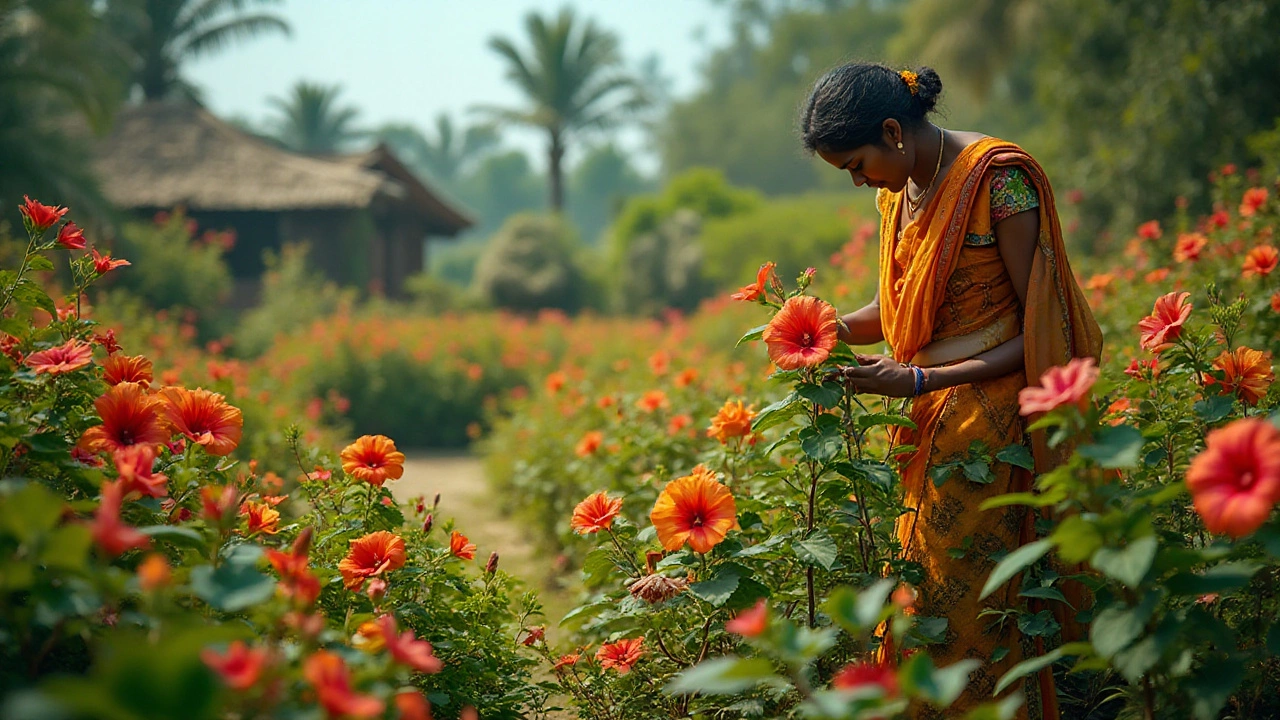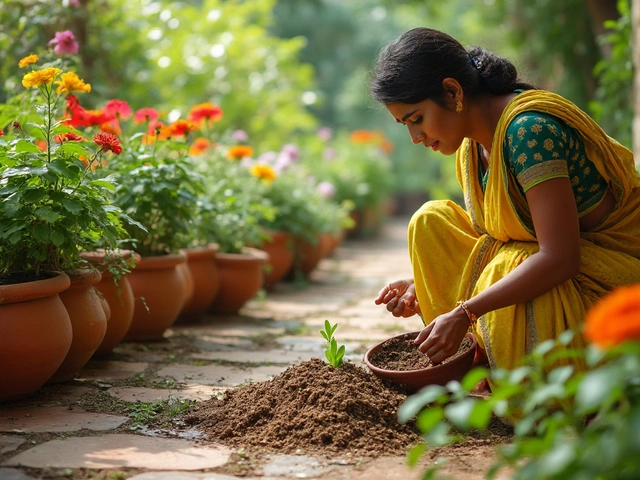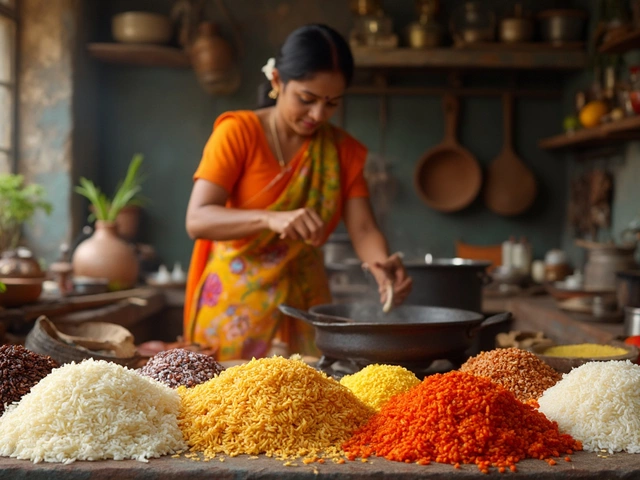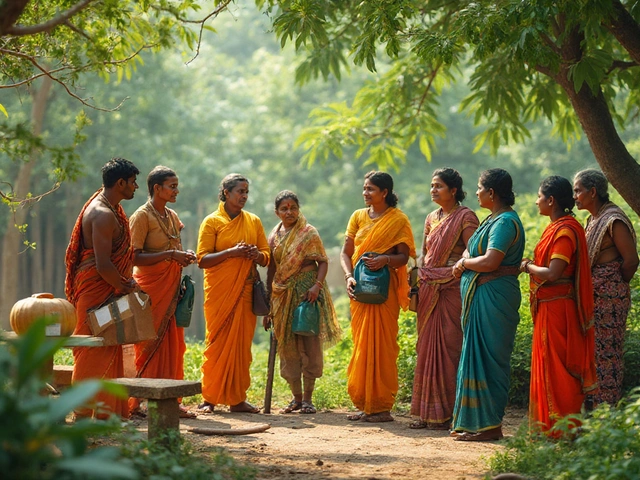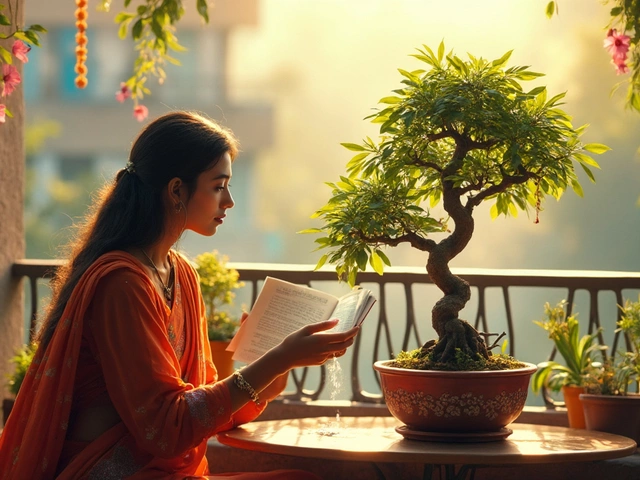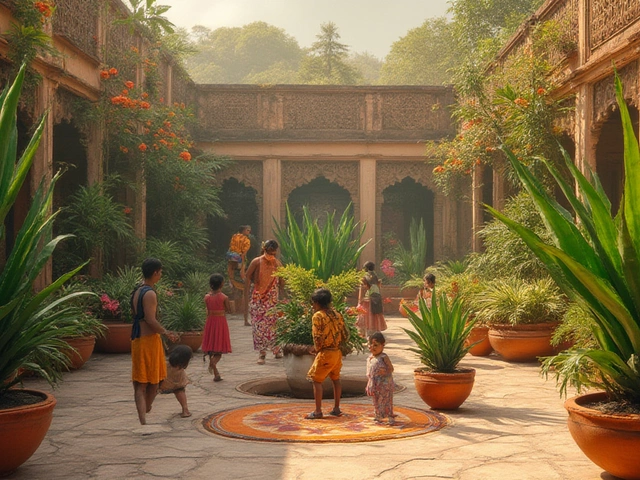Imagine a garden where vibrant colors greet you every day of the year. It's a dream many plant enthusiasts cherish, especially in diverse climates like India's. Here, where the sun shines brightly and monsoons bring life to the earth, certain plants possess the remarkable ability to flower continuously, offering blossoms in every season.
Whether you’re a seasoned gardener or a budding plant lover, understanding which plants thrive all year round can help you maintain a stunning garden effortlessly. From the lush, tropical Hibiscus to the ever-resilient Bougainvillea, these plants not only beautify but also adapt well to varying Indian climates.
- Introduction to Year-Round Flowering Plants
- Understanding Climate Zones in India
- Top Plants for Continuous Bloom
- Care Tips for Perennial Plants
- Designing a Year-Round Blooming Garden
- Common Challenges and Solutions
Introduction to Year-Round Flowering Plants
When you embark on a journey to create a garden that is always in bloom, it becomes essential to pick plants that adapt to your local climate. In a country like India, known for its diverse ecological zones, there’s a treasure trove of options when it comes to year-round flowers. From the sunlit plains of Rajasthan to the misty heights of the Himalayas, India’s climates can support a wide array of seasonal plants that offer vibrant blooms through scorching summers and the chill of winter.
The idea of a year-round flowering garden isn't just about aesthetics; it reflects a careful understanding of nature and adaptation. Imagine your garden as an ever-evolving canvas, where colors dance throughout the seasons. This fascination with perpetual blooms isn't new. In fact, avid gardeners worldwide have long been captivated by the prospect of having a constant spectacle of colors in their gardens. According to a famous American horticulturist, "A garden is a grand teacher. It teaches patience and careful watchfulness; it teaches industry and thrift; above all it teaches entire trust."
Several plants in India are known to be adaptable and resilient, making them perfect candidates for continuous bloom. The hibiscus, with its tropical grace, is a perfect example. Its flowers can bloom every day, offering a variety of colors from deep reds to bright yellows. Equally enchanting is the bougainvillea, a plant known to flourish even in the harshest sun, with its vibrant bracts adding a splash of color to any landscape. Such plants require less maintenance, making them ideal for busy gardeners who yearn for beauty without constant effort.
When considering such plants, it's also beneficial to think about the ecological impact. These perennial bloomers can contribute to local biodiversity, offering nectar to pollinators like bees and butterflies, which are becoming increasingly important in today's environmental climate. Moreover, by choosing native varieties, gardeners can support the local ecology while enjoying the fruits, or rather, flowers, of their labor all year round.
"Gardening is the purest of human pleasures," said Francis Bacon, emphasizing not only the joy plants bring to our lives but their role in linking us to the natural cycle of life.
Understanding Climate Zones in India
India's vast landscape offers a majestic tapestry of varied climates, thanks to its geographical diversity that stretches from the snow-capped Himalayas in the north to the tropical forests in the south. The country's diverse climate is divided into several zones, each presenting unique conditions for cultivating flowering plants. Understanding these zones is crucial for anyone aiming to maintain a garden with year-round flowers. There are six official climate zones in India: the Himalayan region, the plains, the desert region, the humid subtropical region, the tropical wet and dry region, and the tropical wet region. Each of these zones hosts distinct weather patterns which greatly affect plant growth and flowering cycles.
The Himalayan region, known for its harsh winters and relatively mild summers, is home to some of the most unique flora in the world. Here, plants need to be winter-hardy to handle the freezing temperatures. On the other hand, the plains experience extreme temperatures, hot summers and cold winters, requiring a selection of flowering plants that can manage such fluctuations. The desert region, exemplified by arid and semi-arid conditions, invites plants that are drought-resistant and can bloom with minimal water.
In the humid subtropical regions covering central to eastern parts of India including large stretches of Bengal and Assam, the environment is ideal for many perennial plants. These areas usually enjoy a full four-season cycle, accommodating a diverse range of plants that thrive through heavy monsoons and muggy summers. The tropical wet and dry regions, such as Kerala and the Western Ghats, present year-long tropical climates with wet monsoons and dry seasons, giving opportunities for lush flowering throughout the year. These regions are perfect for cultivating vibrant flowers with little seasonal interruption.
Lastly, we have the tropical wet region that encompasses the western coast of India. Here, rainfall is a ceaseless blessing, making it ideal for exotic tropical flowers that can bloom continuously without much human intervention. Gardeners in this region often report success with perennial plants that offer constant beauty all year long. Each climate zone has its unique flora, ensuring that even within India, the garden you maintain can be vastly different from one region to another.
"In understanding your plant's climate requirements, you're halfway through creating a garden that thrives," advises noted horticulturist Dr. Ankit Mehta, reminding us of the importance of climate in determining a plant's success.
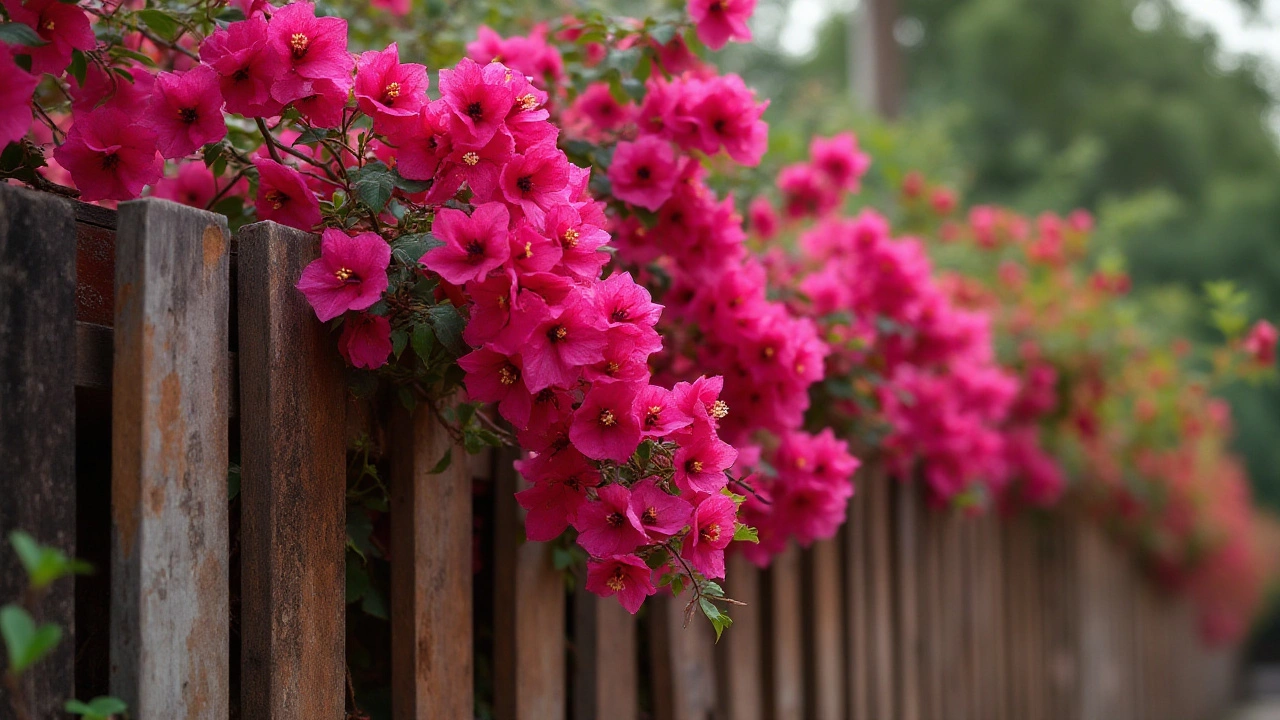
Top Plants for Continuous Bloom
Crafting a garden that blossoms throughout the year requires a blend of knowledge and a touch of creativity. Fortunately, India's rich landscapes offer gardeners a diverse array of year-round flowers that can transform any space into a perennial paradise. One of the standout performers is the versatile Bougainvillea. Known for its vibrant and paper-thin bracts, this climber is a favorite across Indian gardens. Not only does it thrive in the sultry heat, but it also requires minimal watering once established, making it an ideal choice for busy gardeners. The secret to its continuous bloom lies in regular pruning, which helps in stimulating new growth.
Another floral champion is the Hibiscus, or 'Gudhal', a staple in tropical regions. With its ability to flower profusely in sun-drenched spots, it becomes a focal point in many home gardens. The plant's daily blooms, although short-lived, are a sight to behold. To ensure a Hibiscus keeps flowering, feeding it with a balanced fertilizer during the growing season works wonders. Interestingly, a study conducted by the National Botanic Research Institute found that the Hibiscus rosa-sinensis variety significantly improves air quality by absorbing pollutants.
"Plants give us oxygen for the lungs and for the soul." – Linda Solegato
Jasmine, celebrated for its heavenly fragrance, deserves a mention among the perpetual bloomers. Commonly known as 'Mogra', it captivates with its small, white blossoms that open at dusk. Jasmine not only adorns traditional gardens but is also loved for its soothing scent that has therapeutic effects. It thrives best when allowed to bask in sunlight, although a little afternoon shade prevents the buds from scorching. Pairing Jasmine with perennial plants like the Sunpatiens can create an attractive color palette year-round.
The list of perennial plants that promise continuous blooms wouldn't be complete without mentioning the cheerful Marigold. These sun-loving plants, locally called 'Genda', are revered not just for their aesthetic appeal but also for their pest-repelling traits. Marigolds are relatively low maintenance and require basic care, such as deadheading and ensuring good air circulation, to bloom freely. In cultural festivities across India, marigolds hold a significant place due to their vivid colors and symbolism of offering.
A table showing some quick facts about these plants may help plan your year-round garden:
| Plant | Main Season | Sunlight Requirement | Notable Feature |
|---|---|---|---|
| Bougainvillea | Year-round | Full sun | Drought tolerant once established |
| Hibiscus | Year-round | Full sun | Improves air quality |
| Jasmine | Year-round | Full to partial sun | Fragrant blooms |
| Marigold | Winter to summer | Full sun | Pest-repelling properties |
Each of these plants, with its unique traits, fits seamlessly into gardens aiming for a lively, non-stop display of blooms. It's vital to understand the specific needs of these plants, from the amount of sunlight they crave to their water requirements, to keep them healthy and flowering yaer-round. By embracing these lush wonders of nature, any garden can become a testament to the beauty and resilience of flowering plants.
Care Tips for Perennial Plants
Caring for year-round flowers involves more than just occasional watering, especially when aiming for continuous bloom. Successful maintenance begins with understanding the specific needs of each plant, as perennial plants display a range of requirements based on their native environments. Indian gardeners are fortunate to have an array of perennial wonders like hibiscus, bougainvillea, and jasmine that thrive with the right care. Although these plants are hearty, consistent attention will ensure they always look their best.
Watering practices are crucial and should cater to the specific plant in question. Many perennial plants prefer deep watering sessions that penetrate the root systems even during dry spells. In tropical regions, where heavy rains are prevalent during the monsoon, drainage becomes essential to prevent root rot. Using organic mulch around the base of the plants can help retain moisture during summer and keep weeds at bay, thereby ensuring the plants' energy is devoted solely to growth and blooming.
Nutrient management is another critical aspect when it comes to seasonal plants in India. Most perennials benefit from regular feeding. A balanced fertilizer with equal parts nitrogen, phosphorus, and potassium is recommended at the start of the growing season to kickstart growth. Throughout the year, especially pre-blooming and post-blooming stages, incorporating slow-release fertilizers aids in sustaining flower production. Neem oil or other organic pesticides can be helpful to keep pests like aphids and mites at bay without damaging the plant.
Pruning and Training Techniques
Regular pruning not only keeps perennial plants in shape but also encourages more blooms. Many flowering perennials, such as bougainvillea, can become leggy if not trimmed annually. Removing dead or crossed branches allows sunlight and air to penetrate deeper into the plant, fostering healthier growth. Training plants, especially climbers, with proper supports or trellises can prevent damage and enhance their visual appeal. For practical advice, many gardening experts suggest pruning immediately after flowering to avoid cutting potential blooms."The key to a thriving perennial garden lies in your commitment to detailed, attentive care — a little effort every day goes a long way," advises horticulturist Dr. Mohan Rai.Awareness of your plant's health is crucial as it helps catch and rectify issues early on. Discoloration, wilting, and chewed leaves are indicators of common problems such as nutrient deficiencies or pest attacks. Attack these signs with preventive measures like foliar sprays and regular plant inspections.
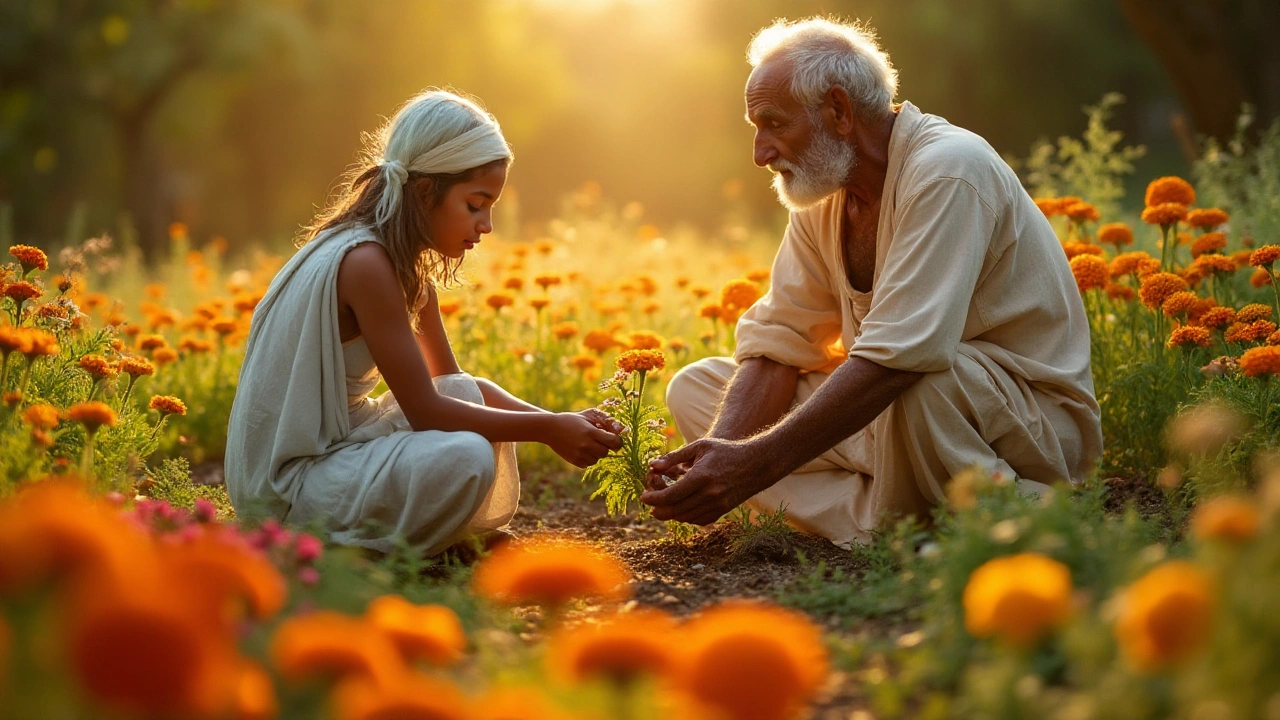
Designing a Year-Round Blooming Garden
Creating a year-round blooming garden is an art that combines the beauty of continuous blooms with the practical needs of each plant. The idea is to carefully select and arrange plants in a way that ensures you always have something in bloom, regardless of the season. This vibrant tapestry of colors begins with understanding your garden’s environment and the unique climatic conditions of your location in India. Consider the light, soil, and water availability, which are crucial for nurturing consistent blooms.
Start by researching plants that flower continuously or have overlapping blooming periods. Ideal choices in the Indian context include the eternal favorite, the Hibiscus, known for its large, colorful flowers, and the Bougainvillea, which flourishes with minimal care and boasts vivid bracts. Another notable mention is the Ixora, with its clusters of tiny flowers that can last throughout the year when properly cared for. Think about how these blooms will aesthetically fill your space, adding not just color but depth and texture to your garden.
When planning your garden design, lay out your garden beds with a mix of perennials and shrubs to ensure that when one plant’s blooms fade, another’s are just beginning. It can be helpful to draw a map of your garden and sketch out where each plant will go, considering their mature sizes and sunlight needs. This thoughtfulness in planning not only enhances bloom probability but also helps in maintenance by preventing overcrowding and ensuring each plant receives adequate resources.
Layering Plants for Effect
Layering is a fantastic technique in garden design that involves planting in tiers, which maximizes your space and ensures a variety of flowering at different heights. Start with taller plants like the Allamanda and the Plumeria in the back, followed by mid-sized plants such as the Periwinkle and Lantana. Finally, use ground cover flowering plants like the Verbena or Creeping Phlox to fill in the front. This layering effect not only optimizes sunlight exposure but also adds a dynamic layout to your garden.
"A garden is a friend you can visit any time," shares the renowned horticulturist Ken Druse, highlighting how thoughtful design translates into a well-visited, cherished space.
Incorporate paths or stepping stones into your design. These pathways not only provide access for watering and pruning but define your garden's layout. Consider creating focal points with ornamentals like roses or unusual plants like clematis on trellises. Raised beds or containers can add layers to flat areas, bringing plants up to an eye-level display while offering options for controlling soil quality.
| Plant | Blooming Season | Care Level |
|---|---|---|
| Hibiscus | Year-Round | Moderate |
| Bougainvillea | Year-Round | Low |
| Ixora | Year-Round | Low |
Keep in mind that maintaining a year-round blooming garden involves regular care. Deadheading old flowers, fertilizing, and pest control are critical tasks to ensure your plants continue to thrive and bloom through the seasons. As you embark on this colorful journey, remember that the joy of tending and experiencing your blooming garden is as fulfilling as the visual reward itself.
Common Challenges and Solutions
Gardening with year-round flowers can be satisfying, but it also poses its share of challenges. One common issue many gardeners face is maintaining the health of these plants through seasonal changes, which can be quite unpredictable throughout the vast Indian subcontinent. Temperature fluctuations, especially, can cause stress to perennial plants, preventing them from blooming consistently. For instance, the intense summer heat in regions like Rajasthan can dry out the soil and scorch the leaves if not properly managed. Conversely, in places with heavy rainfall such as Kerala, issues such as root rot due to waterlogged soil can arise, damaging plant health and reducing flowering.
Pests and diseases are additional challenges that often plague gardens, impacting the flowering plants negatively. Aphids, mealybugs, and fungal diseases like powdery mildew can be particularly detrimental. These pests tend to thrive in warm, humid environments, creating havoc if not properly controlled. One effective solution is to introduce natural predators like ladybirds, which help in keeping the aphid population in check. Neem oil sprays are another eco-friendly method which acts as a deterrent against numerous garden pests, without causing harm to the plants themselves or the beneficial insects around.
Designing a year-round blooming garden also requires vigilance against nutrient deficiencies, which can manifest as discolored leaves or stunted growth. Regularly amending the soil with organic compost or a balanced fertilizer can provide the necessary nutrients to keep your plants flourishing across the seasons. Additionally, understanding when and how to prune is critical. Pruning not only helps in shaping the plants but also encourages new growth and blossoms. Deadheading, or removing spent flowers, can extend the blooming periods and maintain the plant’s energy for fresh blooms.
Gardening expert Anil Kumar once noted, 'A gardener must continuously learn and adapt; the plants teach us patience and resilience.' This mindset is crucial when tackling these common gardening pitfalls.
Moreover, keeping perennial plants healthy during extreme weather conditions involves strategic placement and mulching. Mulching serves as a protective layer, conserving soil moisture and moderating its temperature. During the cooler winter months, it acts as insulation, protecting the root systems from frost damage. Implementing these strategies not only preserves the health of the plants but ensures spectacular blooms throughout the year, making the garden a delightful spectacle to behold.
